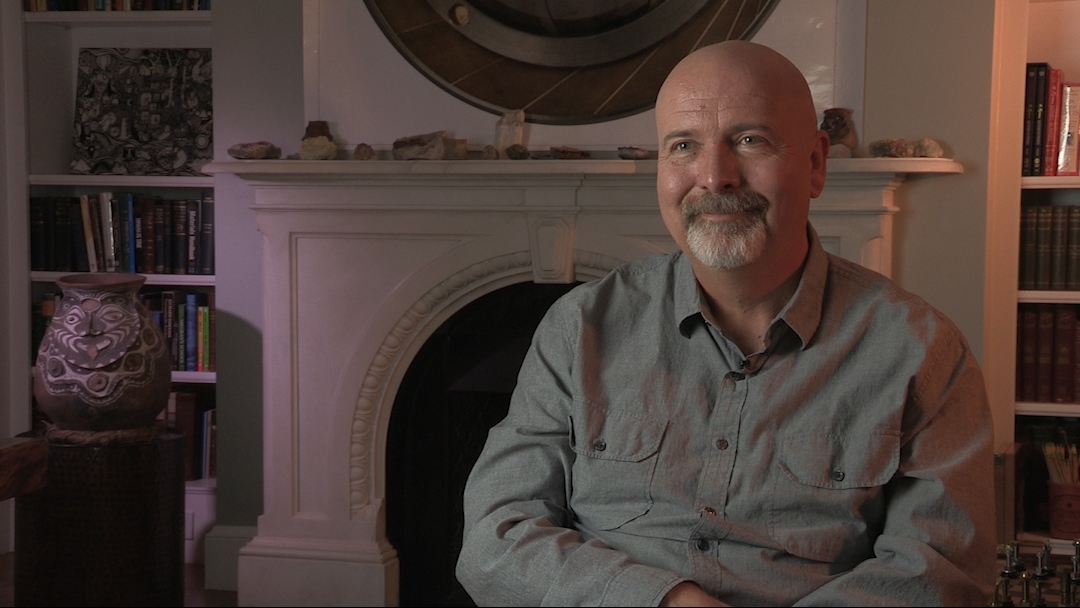NEXT STORY

Getting to know people before they were famous
RELATED STORIES

NEXT STORY

Getting to know people before they were famous
RELATED STORIES


|
Views | Duration | |
|---|---|---|---|
| 101. Calculators and computers are the future | 137 | 01:33 | |
| 102. 'I think I want to do what he does': Alan Kay | 167 | 02:33 | |
| 103. Getting to know people before they were famous | 165 | 03:59 | |
| 104. Meeting Freeman Dyson | 357 | 02:48 | |
| 105. Richard Feynman and Thinking Machines | 462 | 02:17 | |
| 106. Richard Feynman – quartermaster for the stationery | 298 | 01:27 | |
| 107. Neurobiology and fast computing | 172 | 02:17 | |
| 108. How Thinking Machines started | 180 | 03:10 | |
| 109. Proving Amdahl's Law wrong | 326 | 02:24 | |
| 110. Thinking Machines – my second education | 151 | 03:22 |


It was certainly a fun time to be a student, because computers were just... the first microprocessors were just coming out. When I met Marvin [Minsky], he was building a computer, not out of microprocessors, because that wasn't quite ready to go yet, but he was building it out of logic and he was building a computer for kids, a personal computer, before such a thing existed.
Actually, Alan Kay had built one. Alan Kay had built the Alto, which was the interim Dynabook. And in fact, I remember we used to have something called a 'Distinguished Lecturer' series. And distinguished lecturers like Hamming would come and talk about the Hamming code, but the one that I remember the most was Alan Kay showed up to talk about the Dynabook, the idea that you'd be able to have a computer that was this big that you could put on your lap and it would be networked and have all these applications built into it. Of course, it's exactly what we have today, but it was a complete... sort of, it seemed an almost impossible dream at the time.
But what really impressed me about him is instead of showing up in a suit and tie like everybody else did, he showed up in sneakers and blue jeans and a T-shirt, and gave the distinguished lecture. And I remember looking at him, thinking, 'I think I want to do what he does.' And he was like the... before then, my only role models were professors, but he was something else, because he wasn't really a professor. He was at Xerox Park, but he was kind of inventing the future. And I explicitly thought, 'Well, that's kind of what I want to do.' And in fact, I applied to try to get a summer job at Xerox Park and Alan was too absent-minded and I didn't get it, so I was always sad about that. But then later, Alan worked with me at Applied Minds, so we did eventually get to work together.
W Daniel Hillis (b. 1956) is an American inventor, scientist, author and engineer. While doing his doctoral work at MIT under artificial intelligence pioneer, Marvin Minsky, he invented the concept of parallel computers, that is now the basis for most supercomputers. He also co-founded the famous parallel computing company, Thinking Machines, in 1983 which marked a new era in computing. In 1996, Hillis left MIT for California, where he spent time leading Disney’s Imagineers. He developed new technologies and business strategies for Disney's theme parks, television, motion pictures, Internet and consumer product businesses. More recently, Hillis co-founded an engineering and design company, Applied Minds, and several start-ups, among them Applied Proteomics in San Diego, MetaWeb Technologies (acquired by Google) in San Francisco, and his current passion, Applied Invention in Cambridge, MA, which 'partners with clients to create innovative products and services'. He holds over 100 US patents, covering parallel computers, disk arrays, forgery prevention methods, and various electronic and mechanical devices (including a 10,000-year mechanical clock), and has recently moved into working on problems in medicine. In recognition of his work Hillis has won many awards, including the Dan David Prize.
Title: 'I think I want to do what he does': Alan Kay
Listeners: George Dyson Christopher Sykes
Christopher Sykes is an independent documentary producer who has made a number of films about science and scientists for BBC TV, Channel Four, and PBS.
Tags: Alan Kay, Marvin Minsky
Duration: 2 minutes, 33 seconds
Date story recorded: October 2016
Date story went live: 05 July 2017